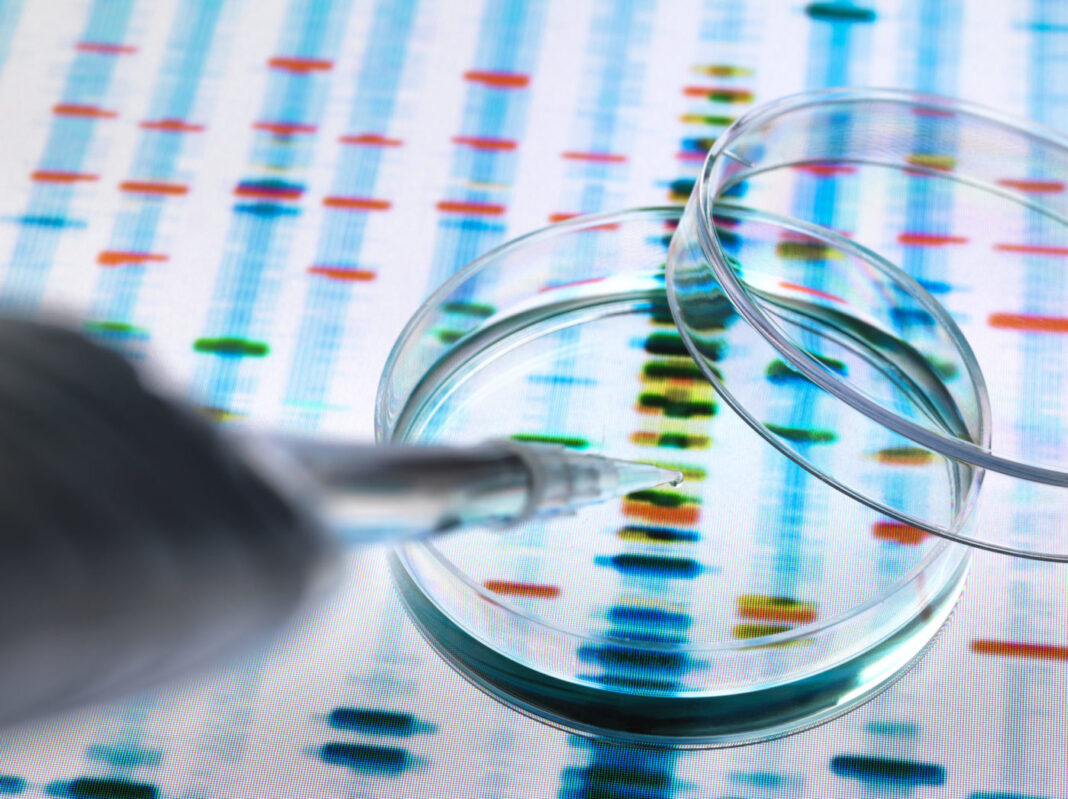
A gene therapy developer focused on treating retinal diseases is being launched with £96 million (about $120 million) in Series A financing and a pipeline anchored by a later-stage X-linked retinitis pigmentosa (XLRP) candidate contributed by its lead investor.
Beacon Therapeutics Holdings’ XLPR candidate is AGTC-501, an adeno-associated virus (AAV)-based gene therapy which had been developed and shepherded through an earlier clinical study by Applied Genetic Technologies Corp. (AGTC).
After concluding it lacked the cash to survive into this year, AGTC agreed to be acquired by Syncona Investment Management in a deal completed last November. The British closed-end investment trust shelled out $23.5 million for AGTC, plus another $50 million in contingent value rights tied to achieving milestones.
Soon after the deal was completed, Syncona CEO Chris Hollowood told GEN, he reached out quickly to David Fellows, who has more than 40 years of experience in ophthalmology. The two knew each other from their days at Nightstar Therapeutics, where Fellows had served as CEO for five years, while Hollowood served as chairman.
“I phoned him up to get him to come out of retirement because we needed a good CEO, and I’m glad he agreed,” recalled Hollowood, who is now Beacon’s chairman.
Said Fellows: “Chris was a big influence in me coming to Beacon, I’ll say that, having worked with him in the past. That was one factor. The other factor was the excitement of working on XLRP again.”
To date, only one gene therapy has been FDA-approved for an eye disorder—Luxturna® (voretigene neparvovec-rzyl), indicated to treat children and adults with the rare inherited blindness disorder biallelic RPE65 mutation-associated retinal dystrophy. Spark Therapeutics won FDA approval for Luxturna in 2017. Two years later, Roche acquired Spark for $4.8 billion, in a deal that expanded the buyer’s portfolio of marketed drugs into gene therapy.
Competing gene therapies
In XLRP, Beacon’s AGTC-501 is competing head-on with botaretigene sparoparvovec (bota-vec, formerly AAV-RPGR), which is being co-developed by MeiraGTx and Janssen Pharmaceuticals. Bota-vec is designed to treat the most common form of XLRP caused by mutations in the eye-specific form of the RPGR gene called RPGR open reading frame 15 (RPGR ORF15).
Last month in reporting first quarter results, MeiraGTx said the companies were on track to submit a biologics license application (BLA) for bota-vec for treatment of XLRP in 2024. Bota-vec is under study in the pivotal Phase III LUMEOS trial (NCT04671433), which was recruiting patients as of Friday according to ClinicalTrials.gov.
In April, researchers presented immune-response data from the Phase I/II MGT009 trial (NCT03252847) at the Association for Research in Vision and Ophthalmology (ARVO) 2023 Annual Meeting. MeiraGTx and Janssen presented 12-month data from the trial in 2020 showing sustained statistically significant vision improvement in the study’s dose escalation phase one year after treatment.

Another XLRP gene therapy in development has been cotoretigene toliparvovec (BIIB112), a candidate the company inherited when it acquired Nightstar Therapeutics in 2019 for approximately $877 million
However, Biogen pulled out of the XLRP gene therapy race, suspending development of cotoretigene toliparvovec in the third quarter of 2021 after the primary endpoint of the Phase II/III XIRIUS trial (NCT03116113). The gene therapy failed to show statistically significant improvement in the proportion of treated study eyes with ≥7-dB improvement from baseline at ≥5 of the 16 central loci of the 10-2 grid assessed by Macular Integrity Assessment (MAIA) microperimetry 12 months after treatment, compared to the study eye of patients randomized to the untreated control group.
Biogen took a $220 million impairment charge related to cotoretigene toliparvovec, reducing its remaining book value to zero, the company disclosed in its Form 10-K annual report for that year. Biogen also took a $39.1 million charge related to manufacturing arrangements and other costs expected to be incurred as a result of suspending cotoretigene toliparvovec and another gene therapy candidate, timrepigene emparvovec (BIIB111) for choroideremia.
Biogen has said little about its XLRP gene therapy since the disappointing topline data readout. However, in February, researchers for the company and clinical partners published positive 12-month data in JAMA Ophthalmology in February from XIRIUS and another clinical trial, XOLARIS (NCT04926129). That data showed that administering the four highest doses of cotoretigene toliparvovec in 12 of the 18 patients enrolled in XIRIUS was associated with early improvements in retinal sensitivity, while one of 103 untreated participants (1%) in the XOLARIS subgroup achieved improved retinal sensitivity at month 12.
“Results suggest that early and sustained improvements in retinal sensitivity and low-luminance visual acuity in some participants through 12 months support consideration of additional clinical trials,” the researchers concluded.
Said Fellows: “Biogen discontinued that program or virtually discontinued it, and we think the data we had was very compelling. People’s vision improved significantly.”
“Very dedicated”
“I feel very dedicated to finding a way to get an XLRP program to market because there are a lot of people that I’ve met over my years that are afflicted with XLRP and are going blind,” Fellows added. “The patient community really needs this program [AGTC-501], which was as compelling as Nightstar’s program. And now, the job ahead of us is to find a way to get it to market, but we think we’re well informed to do that.”
Beacon hopes to advance AGTC-501 first by generating positive 12-month data from the Phase II SKYLINE trial (NCT03316560), then by launching the pivotal Phase II/III VISTA trial (NCT04850118). Fellows said Beacon expects the VISTA trial to launch next year pending FDA feedback on the study design of the trial. VISTA will be designed to assess the effect of AGTC-501 on the symptoms of retinitis pigmentosa in additional patients with XLRP.
One decision Beacon has made, Fellows said, is retaining the AGTC-501 name for the gene therapy—though the rest of the company’s pipeline will carry a Beacon name.

In addition to AGTC-501, Beacon’s pipeline includes a pair of preclinical candidates from sources outside AGTC. One is a candidate in-licensed from the University of Oxford that is designed to target cone-rod dystrophy (CRD), a group of inherited vision loss disorders affecting the retina.
The CRD candidate was developed by Robert MacLaren, MBChB, DPhil, a professor of ophthalmology at the University of Oxford. MacLaren will be an active advisor on the CRD program and will become a non-executive director of the company.
“Beacon Therapeutics is quite unique in being a company that at launch is already underpinned by excellent clinical trial data,” MacLaren said in a statement. “The company has both highly innovative retinal gene therapy programs and the means to target them to the main causes of blindness in both the young and old.”
Using IVT for dry AMD
The other preclinical candidate is an intravitreal (IVT) gene therapy designed to treat dry age-related macular degeneration (AMD). Beacon won’t disclose where that candidate was developed, or its intended target, citing the competitive nature of dry AMD drug development.
The dry AMD treatment landscape was reshaped in February when Apellis Pharmaceuticals’ complement inhibitor Syfovre™ (pegcetacoplan injection) became the first treatment granted FDA approval to treat geographic atrophy (GA), an advanced form of dry AMD.
“It will be a secreted protein, and it’ll be administered intravitreally, which is a much easier route of administration than subretinal delivery. It doesn’t require going into an operating room. It can be done in the physician’s office, so it’s much more patient-friendly,” Fellows said. “We think this is a substantial improvement to what will be out there, or what is out there for dry age-related macular degeneration.”
Syncona added the preclinical candidates to AGTC-501 to create Beacon’s pipeline. The remaining seven programs within what was AGTC’s pipeline will be folded into Beacon. “We are not actively developing those programs,” Hollowood said.
Beacon’s assets also include access to a target generation technology platform intended to identify, screen, and search secreted proteins in ophthalmology. Beacon won’t disclose details of the platform, including where it comes from, though Fellows said it did not originate with AGTC or MacLaren.
Beacon is the third company created by Syncona that has focused on gene therapy for ophthalmic disorders. Both other companies have found buyers among biopharma giants: Nightstar was the first, having sold to Biogen at a 4.5x multiple of cost, defined as the ratio of ending value to contributed capital. The second was Gyroscope Therapeutics, which Novartis acquired for up to $1.5 billion ($800 million of that upfront), a 5.1x multiple of cost, in a deal completed last year.
$248M gene therapy portfolio

Beacon is also the fourth company in Syncona’s gene therapy portfolio, which the company calculates has a combined value of £197 million (about $248 million). The other three are:
- Freeline Therapeutics, a developer of liver-targeting AAV-based gene therapies with one disclosed pipeline program—FLT201, the first AAV gene therapy program to enter the clinic for Gaucher disease Type 1, now under study in the Phase I GALILEO-1 trial (NCT05324943).
- Purespring Therapeutics, whose gene therapies are focused on treating chronic renal diseases. The company says it has two programs in development and the FunSel in vivo screening platform, a discovery engine for future programs.
- SwanBio Therapeutics, which aims to develop genetic medicines for the treatment of serious neurological diseases with significant unmet need. SwanBio’s pipeline includes a lead program, the AAV9 gene therapy SBT101 for adrenomyeloneuropathy now under study in the Phase I/II PROPEL trial (NCT05394064), and five undisclosed preclinical programs.
The gene therapy companies are part of a total Syncona portfolio of 13 companies valued at a total £641 million ($806 million). Syncona’s holdings also include cell therapy, biologics, and small molecule drug developers.
In addition to Fellows, Beacon has fleshed out its management team by naming as chief medical officer Nadia Waheed, MD, MPH, who held a similar position at Gyroscope; and as chief scientific officer Abraham Scaria, PhD, who had the same role at AGTC.
Joining Hollowood on Beacon’s board is Elisa Petris, lead partner of Syncona.
In addition to creating Beacon, Syncona led its Series A financing, which included participation by additional investors including Oxford Science Enterprises (OSE) and Oxford University Innovation (OUI).
OSE is an investment company independent of Oxford that founds, funds, and builds companies via a unique partnership with the University. OUI is the University’s research commercialization arm, supporting innovation and entrepreneurial activities across all University divisions.
Beacon says its name is meant to convey the inspiration it aims to offer patients through its pipeline of ophthalmic gene therapy candidates.
“We think it sends a strong signal of light, which, of course, is essential for these people. We think it’s also inspirational, a beacon of hope for people that would otherwise be going blind,” Fellows said. “We think it’s a good solid and inspirational name.”


